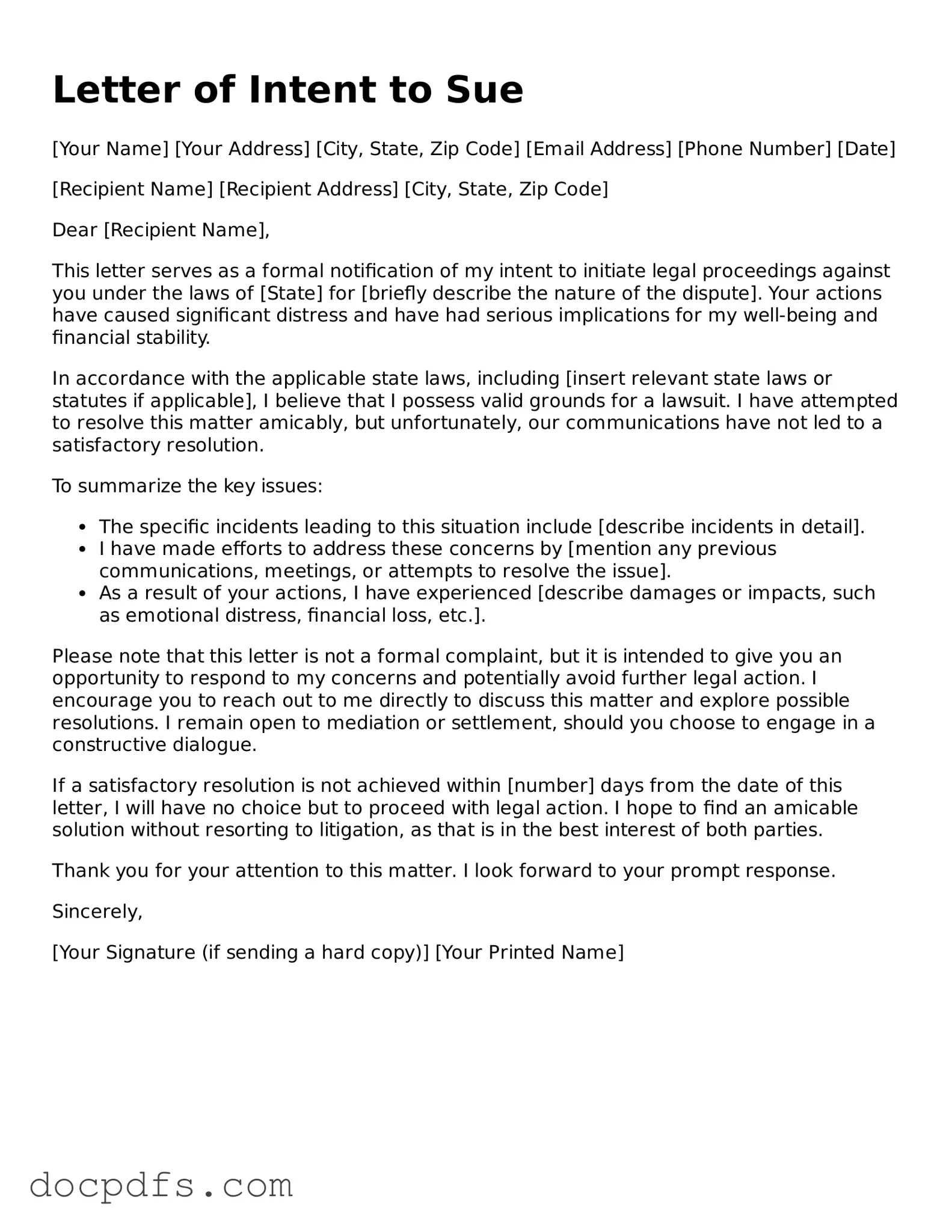When individuals face disputes or grievances that cannot be resolved through informal means, they often consider formal legal action. One important step in this process is the Letter of Intent to Sue form. This document serves as a preliminary notice to the other party, indicating that you are prepared to pursue legal action if necessary. It outlines the nature of the dispute, the specific grievances involved, and the desired resolution. By sending this letter, you communicate your intentions clearly, potentially prompting a settlement before litigation begins. The form typically includes essential information such as the parties involved, relevant dates, and a summary of the events leading to the dispute. Additionally, it may specify a timeframe for the recipient to respond, emphasizing the urgency of the matter. Understanding how to properly fill out and utilize this form can significantly impact the course of your legal journey, making it a vital tool for anyone considering legal action.
